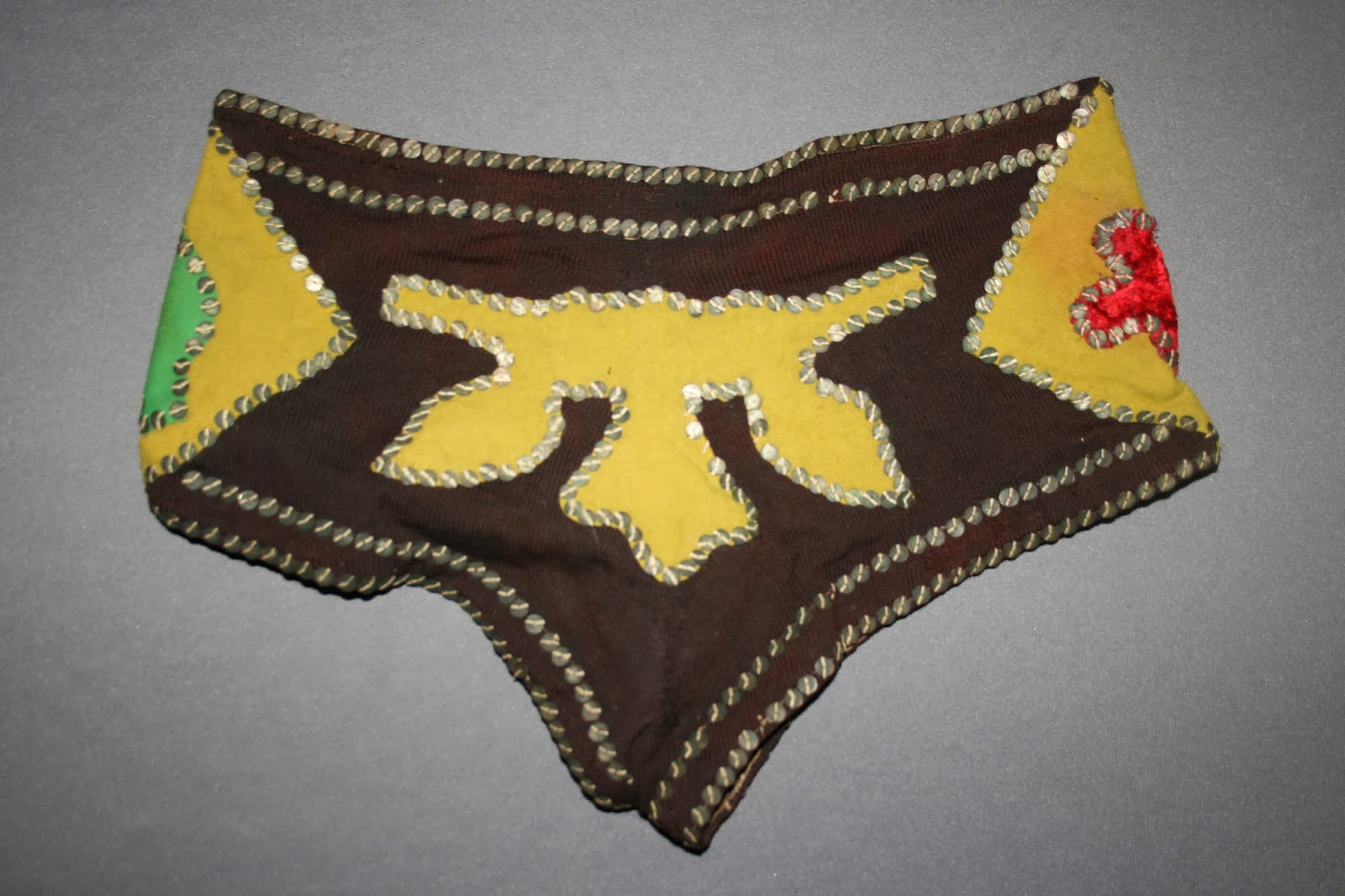The Maine Historical Society is perhaps not the place you would expect to find contortionist costumes from the Vaudeville circuit of the late 1800's, but is in fact the place you will find just such a collection.
Items in this group are associated with Charles Cheltra who was born in 1859 in Ashland, Massachusetts and lived and later died in Portland Maine in 1933. The items are from his career (from about 1881 to 1888) as a “contortionist” who traveled the northeast performing his craft.
 |
| Cheltra in one of his contortionist costumes. Photo courtesy of Maine Historical Society. |
Sometime around the age of 21 Charles performed as a contortionist in theaters, dime museums, and with minstrel and vaudeville shows. Early advertisements labeled him “the India Rubber Man,” and in 1885 he was listed as a Champion Heavy Weight Contortionist of America. During this period, Cheltra appeared throughout the northeast – mostly from New York to Boston. The last notice of performances is around 1888 – when Cheltra was 29 years old.
 |
| Charles Cheltra is listed here in this advertisement from Geneva New York in 1883. Under his name it reads: "The wonderful India Rubber Man in his astounding feats". |
Not many items exist from contortionists of the vaudeville era. Harvard's Houghton Library, New York State Museum, and the Witte Museum in Texas are only a few of the institutions who hold artifacts like these in their collections.
When The Maine Historical Society contacted SAC about treating some of the costumes belonging to Cheltra, we were so excited. First of all, because we had never treated contortionist costumes, secondly, costumes of this era are so interesting. The colors are often bright and decorated with interesting embellishments, and the contortionist outfits belonging to Mr. Cheltra are just as interesting.
 |
| Cheltra shows off his flexibility. Photo courtesy of Maine Historical Society. |
In all ancient civilizations the "bender" was a present figure. Evidence of contortionists exists in both pictorial and sculptured forms from ancient Egypt, Greece, and Rome. This evidence makes it clear that the art existed from the very beginnings of civilization.
Yoga may be a more familiar "modern" form of contortion. Yoga is from the Hindu religion where, during daily meditation the Yoga practitioner assumes various contortion poses. Each pose, if done correctly, provides mind and body benefit, but most importantly, a spiritual fulfillment.
Modern contortionists appear to be able to bend in a way that may suggest they are free of bones, and in fact, the only limitation in the art of contortion is the natural range in flexibility of a contortionists back bone. Contortionists are divided into to categories: the frontbenders who can easily bend forward at the waist and the backbenders who can bend the spine backward in what appears to be an unnatural way. In fact, photographs of modern contortionists show some back benders with there heads resting on their feet. Apparently you cannot be in both categories, as it is nearly impossible of to find a contortionist that is both a frontbender and a backbender. Each takes tremendous preparation and a theatrical costume to accommodate each move.
Cheltra is not just part of Maine's collection. He is also mentioned in the Kattenberg collection, which is perhaps the largest collection of contortionist memorabilia (including a large costume collection), and is housed at the Houghton Library at Harvard. Looking at the costumes in their catalog, many are similar to the Cheltra costume we are treating here at SAC. Unlike modern costumes made of 4-way stretch lycra, the costumes from Cheltra's time were often created from wool, and the sequins of yesteryear are small disks of metal. Wool costumes of course come with the possibility of damage from insects, and the metal disks dull over time.
Below are the Before Treatment images of the Cheltra Costumes as they arrived at SAC. While the colors may have faded slightly, the dramatic effect of the bold lines and bright hues is still evident. The other obvious feature one notices when examining these costumes is that they were well used. Cheltra worked hard in these costumes. These particular items are all hand made, mainly composed of wool with velvet inserts, and are in good condition. Clearly the Cheltra family, who donated them to Maine Historical Society, cared for these items and kept them carefully, an important factor in the keeping of any textile.
 |
| Front of the Black Costume. |
 |
| Obverse side of the Trunks from Cheltra's "black costume". This costume is a bit more elaborate, with felt and velvet inserts. The metal sequins are blackened near the leg openings. |
 |
| Before treatment close-up of Cheltra's green trunks. The green "body" of the trunks are wool knit, while the red insert is wool felt, the metal sequins are hand stitched. (photo: SAC) |
 |
| After treatmentclose-up of Cheltra's green trunks. |
Cheltra and others worked hard at their craft and clearly they worked hard at making costumes to be noticed in. We are so excited to treat these 3 amazing pieces from what remains of his costume collection.
 |
| The after treatment photo of all three pieces, complete with their padded supports. |
_____________________________
Gwen Spicer is a textile conservator in private practice. Spicer Art Conservation specializes in textile conservation, object conservation, and the conservation of works on paper. Gwen's innovative treatment and mounting of flags and textiles is unrivaled. To contact her, please visit her website.



